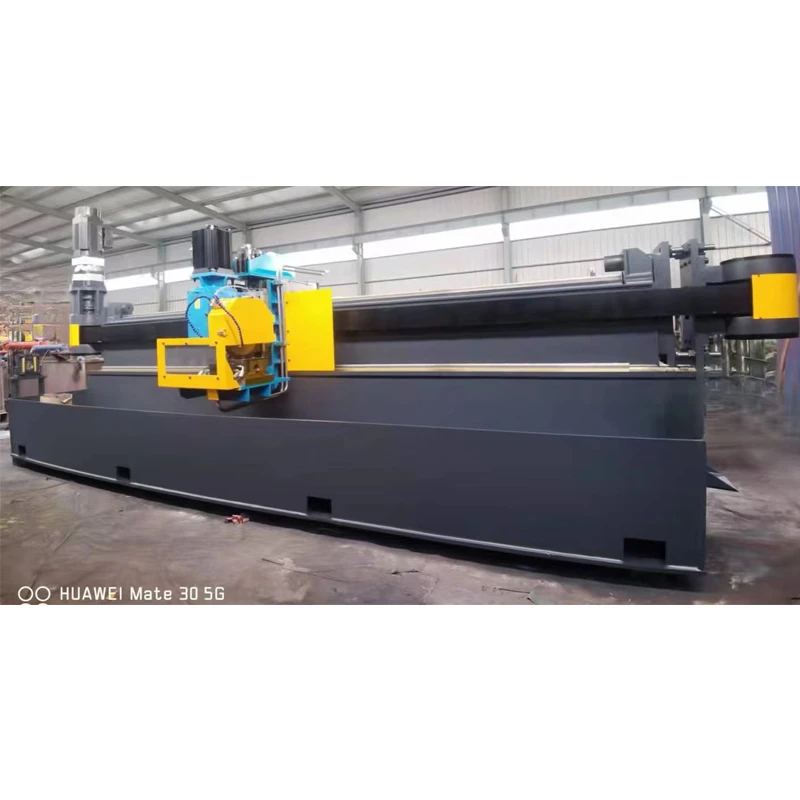manual uncoiler
Understanding Manual Uncoilers A Comprehensive Overview
Manual uncoilers are essential tools in various industrial applications, particularly in the fields of manufacturing and metal processing. As components that assist in the unwinding of materials, these devices are designed to enhance efficiency and streamline processes. This article explores the functionality, benefits, and applications of manual uncoilers, providing insights into their significance in modern industries.
What is a Manual Uncoiler?
A manual uncoiler is a mechanical device used to unwind coiled materials, such as metal strips, wires, or textiles. Unlike automatic uncoilers that require power sources and complex mechanisms, manual uncoilers operate through simple manual processes. They generally consist of a frame that supports the coil, a spindle for mounting the coil, and a mechanism to control the unwinding process. Operators can adjust the tension and guide the material as it is unwound, ensuring precision and safety during operation.
Functionality of Manual Uncoilers
The primary function of a manual uncoiler is to facilitate the smooth unwinding of coiled materials, allowing for more precise cuts and handling. Manual uncoilers typically include the following features
1. Adjustable Tension Control Effective unwinding requires careful control of the tension applied to the material. Manual uncoilers often come equipped with a tension adjustment mechanism, enabling operators to set the appropriate level of resistance for the material being processed.
2. Mounting Spindle The spindle is designed to secure the coil in place, preventing slippage during the unwinding process. This ensures that the material is fed out smoothly and consistently, which is especially important for precision work.
3. Guide Options Many manual uncoilers feature guide rollers or tracks that help direct the material as it unwinds. This allows for organized handling and processing of the material, reducing the risk of tangling or damage.
Benefits of Using Manual Uncoilers
1. Cost-Effective Solution Manual uncoilers are often less expensive than their automatic counterparts. For small to medium-scale operations, where high volume and speed are not critical, investing in a manual uncoiler can be a cost-effective choice.
manual uncoiler

2. Simplicity and Ease of Use These devices are straightforward to operate, making them accessible for personnel with varying levels of technical expertise. This simplicity not only enhances usability but also minimizes downtime during training.
3. Portability Many manual uncoilers are designed to be lightweight and portable. This allows businesses to easily move the device between different workstations or areas without the need for extensive setup.
4. Versatility Manual uncoilers can handle a variety of materials, from metal strips to fabric rolls. Their adaptable design makes them suitable for diverse applications across different industries.
Applications of Manual Uncoilers
Manual uncoilers find applications in a myriad of industries
1. Manufacturing In manufacturing environments, manual uncoilers are utilized to feed raw materials into machinery for further processing. Whether it’s metal fabrication or textile production, they play a crucial role in ensuring an uninterrupted workflow.
2. Construction In the construction sector, manual uncoilers are commonly used to manage wiring and tubing. Their ability to unwind coiled materials safely helps streamline installation processes.
3. Automotive The automotive industry often relies on manual uncoilers for processing metal sheets and components, allowing for the creation of parts with high precision.
4. Craft and Hobby Industries Manual uncoilers are popular among crafters and hobbyists who need to manage rolls of paper, fabric, or wire for various projects.
Conclusion
In conclusion, manual uncoilers are vital tools that enhance operational efficiency across diverse industries. Their design simplicity, cost-effectiveness, and portability make them a preferred choice for many businesses. Whether in manufacturing, construction, or creative fields, manual uncoilers provide reliable support, ensuring that raw materials are handled with care and precision. As industries continue to evolve, the importance of such equipment will remain, highlighting their ongoing relevance in the realm of industrial operations.
-
High Frequency Straight Seam Welded Pipe Production Line-BzZhou Xinghua Machinery Equipment Manufacturing Co., LTD.|Precision Welding, High EfficiencyNewsJul.30,2025
-
High Frequency Straight Seam Welded Pipe Production Line|BzZhou Xinghua|Precision Welding&EfficiencyNewsJul.30,2025
-
High Frequency Straight Seam Welded Pipe Production Line - BzZhou Xinghua|Precision Engineering&EfficiencyNewsJul.30,2025
-
High-Frequency Straight Seam Welded Pipe Production Line-BzZhou Xinghua Machinery Equipment Manufacturing Co., LTD.NewsJul.30,2025
-
High-Frequency Straight Seam Welded Pipe Production Line-BzZhou Xinghua Machinery Equipment Manufacturing Co., LTD.|Precision Manufacturing, High EfficiencyNewsJul.30,2025
-
High Frequency Straight Seam Welded Pipe Production Line-BzZhou Xinghua Machinery Equipment Manufacturing Co., LTD.|Precision Steel Pipe Manufacturing&Industrial EfficiencyNewsJul.29,2025


